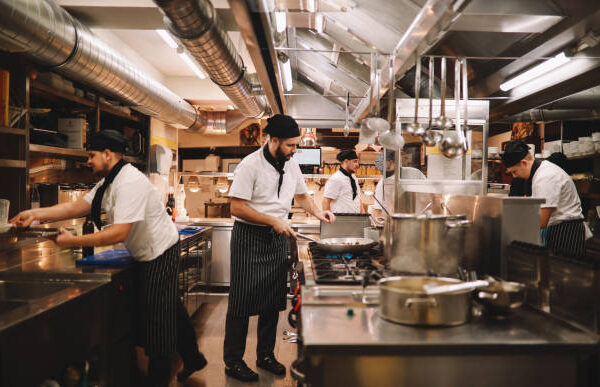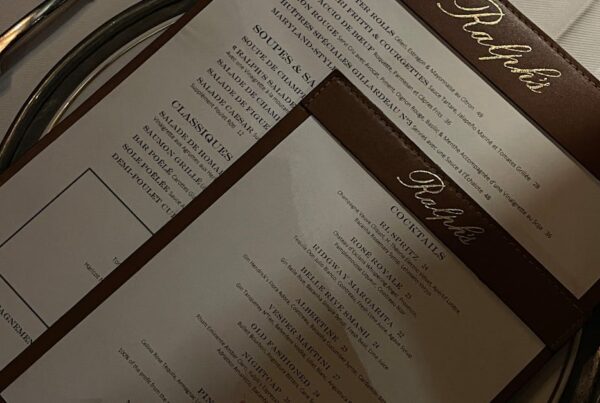In the competitive world of the restaurant industry, a strong brand identity is essential for attracting and retaining customers. Your restaurant’s design plays a pivotal role in conveying that identity and creating a memorable dining experience. In this blog post, we will explore the ways in which thoughtful design can reinforce your brand, enhance customer experience, and ultimately drive business success.
Understanding Brand Identity
Brand identity encompasses the visual, emotional, and experiential elements that define your restaurant. It includes your logo, color scheme, typography, and even the tone of voice used in your marketing materials. But brand identity goes beyond just visuals; it represents the values and promises you communicate to your customers. For restaurants, this identity must be reflected consistently across all touch points, including the interior design, exterior signage, staff uniforms, and even the menu.
A strong brand identity helps differentiate your restaurant from competitors, creates customer loyalty, and fosters an emotional connection with your audience. When customers feel aligned with your brand’s values, they are more likely to choose your establishment over others, return for future visits, and recommend you to friends and family.
The Importance of Design in Branding
Design is one of the most powerful tools you have for expressing your brand identity. It is often the first impression customers have of your restaurant, and it sets the tone for their entire dining experience. A well-designed space can evoke emotions, tell a story, and communicate your brand’s values without saying a word.
Setting the Mood
The atmosphere of your restaurant can dramatically influence how customers feel while dining. Elements such as lighting, color schemes, furniture, and decor contribute to the overall mood and ambiance. For example, a cozy, intimate setting with warm lighting and soft colors may appeal to couples seeking a romantic dinner, while a bright, vibrant space with bold colors and lively decor might attract families or groups of friends looking for a fun outing.
Consider your target audience when designing your space. What kind of environment will resonate with them? Understanding your customer base will allow you to create an ambiance that aligns with their preferences and enhances their overall experience.
Creating a Unique Experience
Design should also serve to create a unique and memorable experience for your guests. Think about how you can incorporate elements that reflect your brand’s story or values. For instance, if your restaurant emphasizes sustainability, consider using reclaimed materials in your decor or showcasing local artwork. If your brand is rooted in a specific culture, infuse elements from that culture into your design, whether through patterns, colors, or art.
By weaving your brand’s narrative into the physical space, you provide customers with a richer experience that goes beyond just food. This connection can lead to stronger customer loyalty and a desire to share their experiences on social media or through word of mouth.
Enhancing Functionality
While aesthetics are essential, it’s also crucial that your design enhances functionality. A well-designed space should facilitate smooth operations for both staff and customers. Consider the layout of the dining area, kitchen, and service stations. Ensure there is enough space for staff to move freely, allowing for efficient service and a pleasant experience for guests.
Moreover, the design should reflect the type of service you offer. For instance, if you have a fast-casual concept, your layout might prioritize quick turnover with communal tables and a self-service area. In contrast, a fine dining establishment may require a more intimate layout with private tables and attentive service. The key is to ensure that your design supports the overall brand experience you aim to provide.
Key Design Elements That Reflect Your Brand
There are several design elements that can effectively convey your brand identity and enhance the overall dining experience. By carefully considering each aspect, you can create a cohesive space that resonates with your audience.
Color Palette
Colors have a profound psychological impact and can evoke specific emotions and associations. When choosing a color palette for your restaurant, consider the feelings you want to evoke in your customers. Warm colors like red and orange can create a sense of excitement and warmth, while cool colors like blue and green can promote relaxation and calmness.
Additionally, ensure that your color choices align with your brand identity. For example, a health-focused restaurant might opt for fresh greens and earthy tones, while a trendy urban eatery might lean towards bold, vibrant colors that create a lively atmosphere.
Typography
Typography is another important aspect of branding that often goes overlooked. The fonts you choose for your menus, signage, and marketing materials can convey different personalities and tones. A modern, sans-serif font may suggest a contemporary vibe, while a classic serif font might evoke a sense of tradition and elegance.
Consistency in typography across all platforms helps reinforce your brand identity and makes your restaurant easily recognizable. Ensure that the fonts you select are legible and appropriate for the dining experience you are creating.
Furniture and Fixtures
The choice of furniture and fixtures is crucial in reflecting your brand’s personality. Whether you opt for rustic wooden tables, sleek metal chairs, or plush upholstered booths, each piece contributes to the overall ambiance. Consider the comfort of your guests as well; comfortable seating encourages patrons to linger and enjoy their experience.
In addition to furniture, consider the fixtures and fittings, such as light fixtures, door handles, and even tableware. Each of these elements should align with your brand identity and enhance the overall aesthetic of your space.
Artwork and Decor
Artwork and decor are powerful tools for storytelling. They can provide visual interest and reinforce your brand’s narrative. Consider incorporating local artwork or pieces that resonate with your brand’s story. A mural that reflects the history of your cuisine or a gallery of local artists can create a unique and engaging atmosphere.
Seasonal decor updates can also keep your space feeling fresh and inviting. This allows you to connect with your audience on a deeper level by reflecting current trends or local events.
Signage
Signage is often the first interaction potential customers have with your restaurant. Your exterior signage should be eye-catching and clearly convey your brand message. Whether it’s a sleek, modern sign or a vintage-inspired design, ensure that it aligns with your overall branding.
Interior signage is equally important, as it guides customers through the space and reinforces your brand identity. Consider using creative signage for menus, specials, or restroom directions that reflects your restaurant’s personality.
Consistency Across Touch points
To create a cohesive brand experience, it’s essential to maintain consistency across all touch points. This includes everything from your restaurant’s design to your online presence and customer interactions.
Ensure that your website, social media profiles, and marketing materials reflect the same aesthetic and messaging as your physical space. This consistency builds trust and familiarity, making it easier for customers to recognize and connect with your brand.
Staff Training
Your staff plays a crucial role in delivering your brand experience. Ensure that your team understands your brand values and can communicate them effectively to customers. This can be achieved through comprehensive training programs that cover not only service standards but also the story and mission behind your brand.
Encouraging your staff to embody your brand’s values in their interactions with customers can significantly enhance the overall experience. When staff members genuinely connect with the brand, it resonates with customers and creates a more authentic dining experience.
Leveraging Customer Feedback
As you implement design changes to reinforce your brand identity, it’s essential to gather customer feedback. Pay attention to their reactions to the ambiance, decor, and overall experience. This feedback can provide valuable insights into what resonates with your audience and where adjustments may be needed.
Encouraging customers to share their experiences through reviews or social media can also enhance your brand presence. Positive testimonials can serve as powerful marketing tools, showcasing your restaurant’s unique atmosphere and culinary offerings.
Case Studies: Successful Branding Through Design
To illustrate the power of branding through design, let’s take a look at a couple of successful examples.
One well-known fast-casual chain focuses on fresh, healthy ingredients and a laid-back atmosphere. Their design features natural materials, greenery, and bright, inviting colors that reflect their commitment to sustainability and wellness. This cohesive approach not only attracts health-conscious diners but also reinforces their brand message.
Another example is a fine dining restaurant that embraces a modern, minimalist aesthetic. The use of sleek furniture, muted colors, and elegant lighting creates an intimate atmosphere that aligns with their high-end culinary offerings. The attention to detail in both the decor and service enhances the overall experience, making it a destination for special occasions.
Essential for Success
In today’s competitive restaurant landscape, a strong brand identity is essential for success. Thoughtful design plays a pivotal role in conveying that identity and creating a memorable dining experience. By focusing on key elements such as color palette, typography, furniture, and decor, you can ensure that your restaurant space reflects your brand values and resonates with your target audience.
Remember that consistency across all touch points, including your online presence and staff interactions, is vital for building trust and recognition. Ultimately, a well-designed restaurant that aligns with your brand identity not only attracts customers but also fosters loyalty and enhances the overall dining experience.
At Restaurant Resolutions, we specialize in helping restaurants like yours create spaces that effectively communicate brand identity. Whether you’re planning a new restaurant or renovating an existing one, our expertise can help you design an environment that delights your customers and supports your culinary vision. Let’s work together to ensure that your restaurant stands out and thrives in a crowded market!



